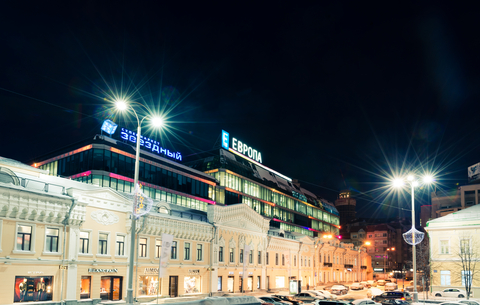Proximity and Efficiency: Central Europe Becomes a Hub for Bike Production
The bicycle and e-bike industry is undergoing a transformative shift in 2025, with Central Europe (C
moreXtreme Fitness Gyms Targets Dominance in Eastern European Fitness Market
Polish fitness franchise Xtreme Fitness Gyms is making waves in the fitness industry, celebrating th
moreAdidas Expands Presence in Switzerland with Zurich Branch
Adidas, the global sporting goods powerhouse, is strengthening its foothold in Central Europe (CE) b
morePolish Brand 4F Becomes Official Technical Supplier for National Volleyball Teams
Polish sportswear brand 4F has announced a landmark partnership, becoming the official technical sup
moreFriction Labs Joins Crag Sport Portfolio: A New Business Partner for Climbers in Central Europe
Krakow-based Crag Sport, a recognized expert in business development in Central Europe (CE), has exp
more
"Business
Partner search for the Sports industry in Central Europe"
You are here » Home Page
» CE Sports Business News
» Russian Demand for Shopping Malls Expanding
 2014-07-14
source own
2014-07-14
source own
Russian Demand for Shopping Malls Expanding
 2014-07-14
source own
2014-07-14
source own
The U.S. might still be the world leader for mall space but Russia will soon overtake the U.K. for having the second-most mall space in Europe. Russia is experiencing a huge growth in mall development, with almost 100 new shopping malls being built in just over two years.Avia Park mall in Moscow will be opening this autumn. The development will be the largest shopping mall in Europe, with the building reaching over 22 football fields and four stories. Many international retailers have already signed leases including Adidas, Bhs, Costa Coffee, Debenhams, and Early Learning Centre.The Avia Park development will dwarf the previous record holder for largest mall in Europe, MEGA Belaya Dacha, located near Moscow, which has a floor space of 202,000 sq m. Avia Park will have 235,000 sq m of retail space. In comparison, the largest shopping centre in the U.K., MetroCentre, comes in at just 194,400 sq m of retail floor space.Last year saw a marked increase in shopping centre development completion in Europe. Particularly, the second half of 2013 saw a doubling in retail openings from the first half of the year. Cushman & Wakefield, international property consultants, reported that there were 110 mall openings across Europe in 2013, and 44 of those were in Russia. By the end of this year, Russia is scheduled to have another 50 shopping centres completed.All of these new developments have set Russia up to overtake the U.K. for having the second-most mall retail space in Europe. It is becoming clear that this move should happen by the end of 2014. The development pipeline for Russia is the largest in Europe, and could even move the country into the lead over France if the planned projects are completed.France currently has 17.3 million sq m of mall space, making it, for now, the winner for most retail mall space in Europe. The U.K. is currently second with 16.93 million sq m of mall space. To date, Russia is just behind with 16.86 million sq m.The high end luxury mall is a rare thing in Russia. Most malls are in the mid-market range. Russia’s largest GUM (Government Universal Store), which faces onto Red Square, has many international high-end brands including Hermès, Hugo Boss and Burberry. GUM’s largest rival in the luxury market is TsUM (Central Universal Department Store), which sells most of Europe’s top designer products.The head of retail services at Cushman & Wakefield in Russia, Maxim Karbasnikoff said, “There is an appetite for consumption in Russia. There aren’t that many high streets – the shopping mainly happens in shopping malls."There is some debate amongst market experts on whether the Russian market will continue its previous growth trend. Last year, the city of Moscow alone had retail spending equivalent to half of Spain’s. This year, however, the rouble has experienced rapid depreciation, which has caused a decline in spending because of the large amount of imported goods.Michael Rodda, a Cushman & Wakefield partner, commented on the increasing number of mall developments in Europe, "Between 2008 and 2011 it was very difficult to develop shopping centres. Development finance is available again and most of the occupier markets are healthy again. We are now back into an environment where developers feel confident about breaking ground."Central and Eastern Europe has shown a trend towards template building for shopping malls, where developers are choosing to replicate the same designs in a bid to save money. Meanwhile, in Western Europe, designers are going for more unique and ambitious designs.There is also a trend in Western Europe towards mall extensions, where existing structures are expanded to meet growing demand. Western Europe completed 45 mall extensions, more than double the 19 that were completed in central and Eastern Europe. On the other side of development, new malls were more the norm in central and Eastern Europe, which totalled 73, compared to the 37 that were completed in Western Europe in the second half of 2013.









